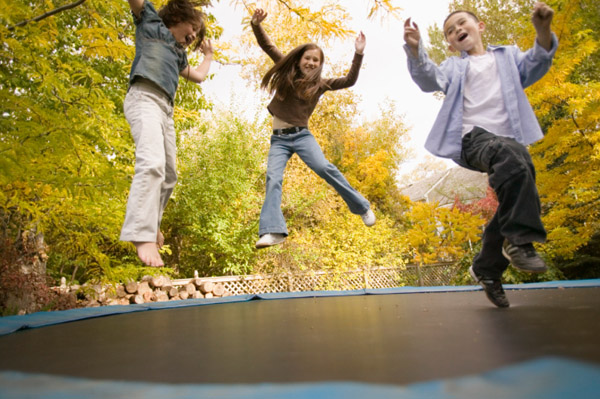What the New Trampoline Safety Report Misses
 Photo via Thinkstock
Photo via Thinkstock
About five years ago, our neighbor dug up her lovely backyard patio and plunked a circular trampoline with safety enclosure for her two kids in its place. My own kids have spent untold hours on that trampoline with their neighbor friends, bouncing, playing, and, yes, sometimes bumping heads and twisting ankles.
The American Academy of Pediatrics wants them to stop. In a new policy statement on trampoline safety (an Orwellian-sounding title if ever there was one) the AAP’s Council on Sports Medicine and Fitness states that trampolines are too intrinsically dangerous and parents are “strongly discouraged” from letting their kids use them.
The academy sites cervical spine injuries as well as sprains, strains, and contusions as the reason, adding that most kids get hurt when too many of them are jumping at the same time.
But, according to USA Today, the trend in trampoline injuries is down, not up, possibly due to the widespread use of safety enclosures.
“The National Electronic Injury Surveillance System estimates that 98,000 trampoline-related injuries occurred in 2009, the most recent year for which statistics are available, resulting in 3,100 hospitalizations. That’s down from 3,300 hospitalizations and 112,000 injuries in 2004.”
That trend is good news. And I hope my kids don’t end up in the hospital because of their frequent trampoline use. But, even if they do, to me, the benefits still outweigh the risks.
In fact, the number of sibling brawls avoided in our home because of therapeutic bouncing and roughhousing on the trampoline have probably prevented injuries. “Tramping,” as we call it, has a surprising calming effect on our children. Often, on those endless Sunday afternoons, when they start to bicker and fight, my husband and I send them over to the trampoline to work out their “issues.” It works every time.
The trampoline also has become a kind of hangout where kids from around the neighborhood get together and play without the ever-watchful gaze of today’s hoard of helicopter parents. Kids of all ages make up games on that trampoline, pile on top of each other, dodge balls, and aim squirt guns. On quieter days, they tell jokes and share secrets. Occasionally, I look out our kitchen window and see our neighbor’s son and daughter, now tweens, sprawled out on the trampoline under the clear blue sky, just talking to each other.
Yes, there is intrinsic risk in rough play. But it’s a risk I’m willing to take.


